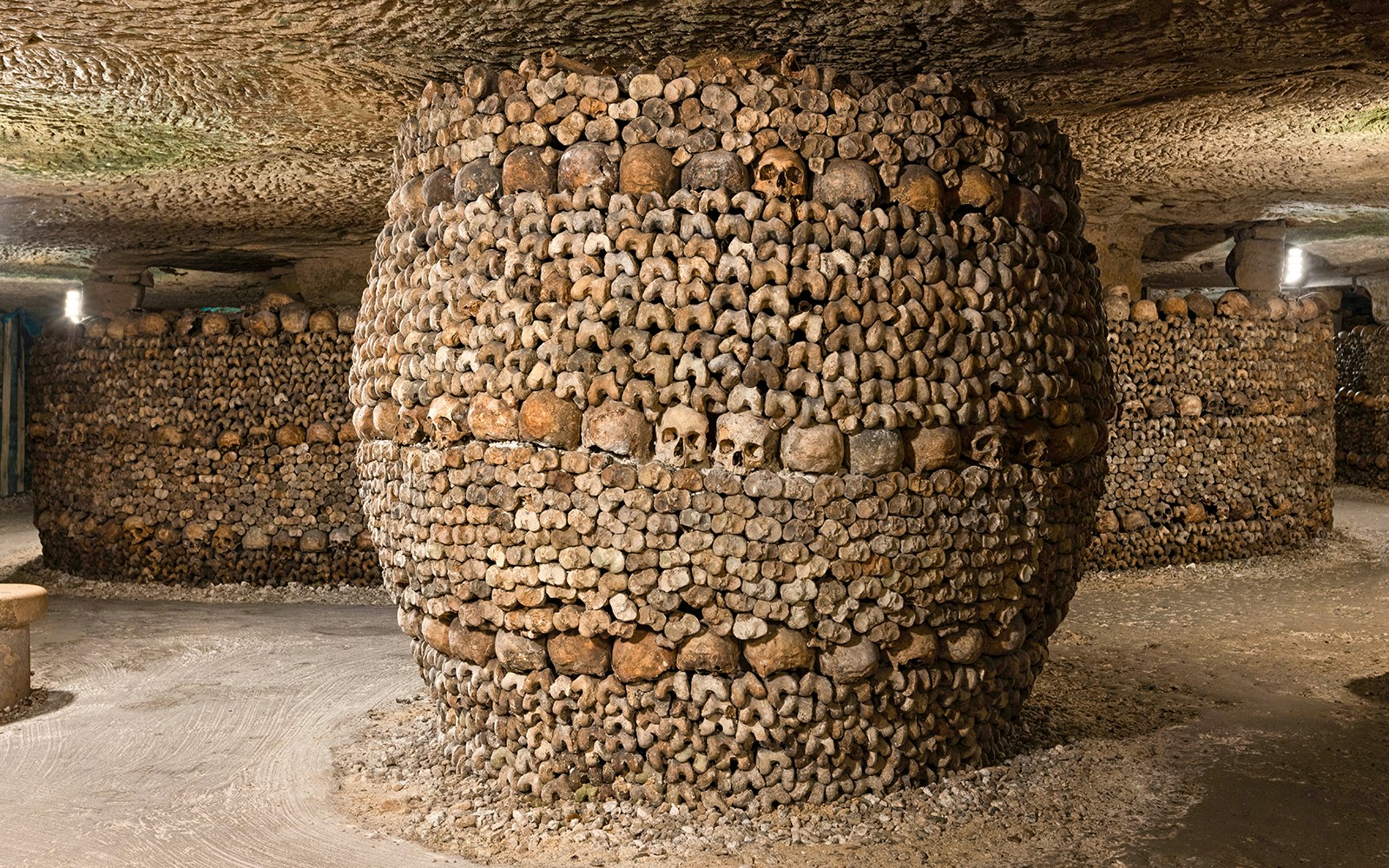Commencez votre voyage en descendant un escalier en colimaçon de 130 marches dans les Catacombes. L'escalier comporte des marches triangulaires et des murs de plus en plus humides au fur et à mesure que l'on s'enfonce. En bas, une galerie explique l'histoire du lieu, d'une carrière de calcaire au plus grand ossuaire du monde.
A voir dans l'Ossuaire
La crypte des passions
Cette structure en forme de tonneau, faite de crânes et d'os de cheville, devait ressembler à Obélix du dessin animé Astérix et Obélix.
Lampe à huile
Cette lampe a joué un rôle important dans la sécurité des carriers au travail. Une lampe allumée signifiait qu'il y avait de l'oxygène dans l'air et une lampe éteinte signifiait qu'il n'y avait plus d'oxygène et qu'il était temps pour les hommes de sortir du souterrain.

